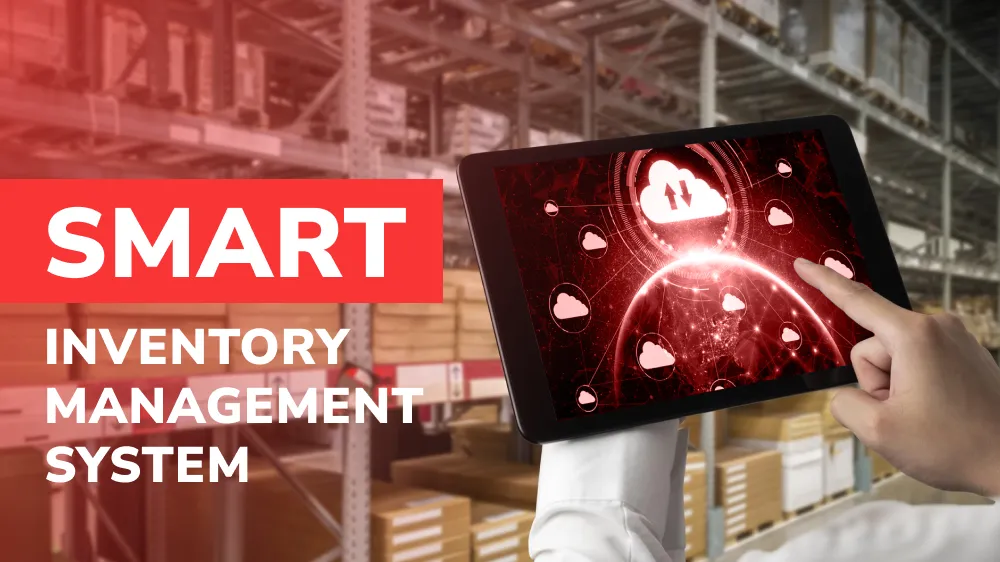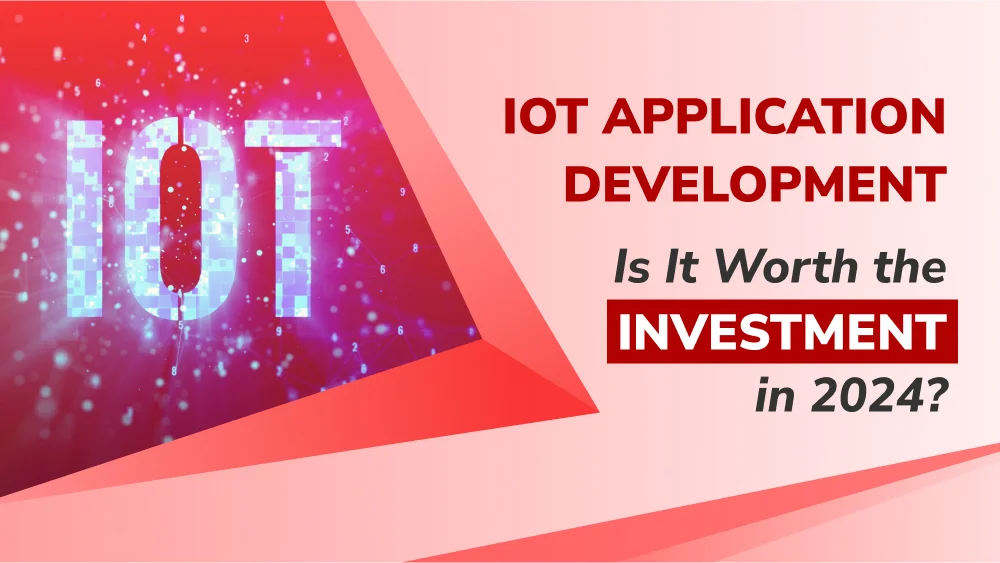
IoT in Healthcare: A New Era of Connected Medical Devices

Content Map
More chaptersThe introduction of the Internet of Things (IoT) in healthcare enhances the delivery of the healthcare sector and is leading to new generations of connected, smart medical devices. That is why IoT technology not only makes better patient outcomes but also optimizes the work of medical facilities, thus decreasing overall healthcare expenses. According to the researchers, the new IoT market in global healthcare will be $289 billion by 2028 from $150 billion in 2024. Such a fast pace of expansion supports the idea of the IoT as a possible game changer in healthcare.
Probably one of the most attractive instances of IoT in healthcare examples is the possibility of monitoring patients permanently. Specifically, smartwatches and fitness trackers are portable and can keep track of many critical patient data, including heart rate, blood pressure, and oxygen levels, and relay such useful information to healthcare professionals for necessary actions. Moreover, wearable and attachable smart connected devices that involve IoT in the medical field, such as insulin pumps and cardiac monitors, are improving patients’ healthcare accuracy and individuation.
One of the biggest advantages of the Internet of Things is in the sphere of our healthcare, and a network of linked therapeutic gadgets is changing the approach to managing our overall well-being.
Types of IoT-connected Medical Devices

A rich list of IoT medical devices expands the realm of the Internet of Things healthcare with the primary purpose of improving the quality of patients’ lives and healthcare results. These IoT devices fall into several primary categories:
Wearable Devices
Fitness trackers, smartwatches, smart clothing, and other wearable electronics have been widely used for both personal health monitoring and medical needs. These remote patient monitoring devices are fitted with different types of sensors, whereby the parameters monitored include the heart rate, physical movement, sleep, and oxygen in the human body, among others. For instance, smartwatches may notify the wearers that their pulse rates are abnormal, which should be checked by a doctor. Other wearable devices urge users to be active by setting goals and monitoring their activity levels. In a care context, it is possible for healthcare professionals to track their patient’s health data regarding chronic diseases using statistics from wearable devices. Such continuous patient monitoring is effective in the early detection of any possible health complications, making it easier for healthcare practitioners to intervene, thus enhancing the quality of the health of the patients.
Medical Sensors
Medical sensors are specialized devices that are designed to measure a narrow range of physiological parameters on which the assessment and management of the patient depend. Some of the medical sensors it is possible to mention are thermal, blood pressure, and glucose sensors. For instance, with diabetes, continuous glucose monitors (CGMs) are very useful for a person since the device displays the glucose levels at any given instance, therefore helping with the administration of insulin. Likewise, wireless blood pressure monitors encourage remote monitoring, hence enabling healthcare practitioners to attend to hypertensive clients as and when required. These sensors are especially helpful for monitoring one’s health without having to go to the hospital because they can detect early signs of sickness and allow the patient to feel more comfortable being at home.
Implantable Devices
Implantable devices can be described as sophisticated pieces of healthcare technology that are surgically inserted into the body with the aim of observing or controlling some body functions. This category includes things such as pacemakers and defibrillators, which help treat the irregularity of the heartbeat. Pacemakers make sure that the heart rate is constant and send electrical impulses to the heart, while the implantable cardioverter-defibrillators identify lethal heart rhythms and shock the heart. These devices are sometimes integrated with connectivity options and, as a result, can be monitored remotely by healthcare providers. It enables the monitoring of the device’s performance as well as the patient’s condition; hence, there will be fewer visits to the hospital and greater patient safety.
Connected Medical Equipment
Connected medical equipment refers to various clinical assets, including imaging equipment, ventilators, and infusion pumps. These devices also come with integrated networking that enables them to communicate with electronic health records (EHRs) and other healthcare technologies. For example, in MRI and CT scanners, the produced picture can be sent to the radiologist for evaluation and diagnosis without relying on other means. With connectivity features in ventilators, the condition of the patient’s respiratory system is continually observed in real-time, and if something happens to change the state of the patient, then the medical team will be notified. The integration also benefits the patient care processes because it makes the clinical information accessible to healthcare providers, hence increasing the safety of the patients.
IoT Technologies Enabling Connected Medical Devices
There are several technologies that are pivotal to the IoT in terms of connecting and operating medical devices.
Wireless Communication Technologies
IoT-connected medical devices would not have been possible without wireless communication technologies. Wireless technologies such as Bluetooth, Wi-Fi, and cellular work to enable the transfer of healthcare data from the devices to the healthcare systems. Bluetooth is utilized in wearables such as fitness trackers along with smartwatches since it uses minimal power and has short ranges. Wi-Fi, on the other hand, provides a higher data throughput and is well suited for home-based medical devices like the remote patient monitoring system. Wireless links are used in and accessed from nearly all devices with 4G and, moreover, the future-enhancing technology of 5G; long-range connectivity is necessary for devices such as implantable devices, and another vastly important area is mobile health applications. These wireless technologies enhance the transfer of medical data and information with less or no compromises to the security of the data; timely monitoring and necessary quick medical treatments are also possible.
Cloud Computing for Data Storage and Analysis
Cloud computing is a key component of the IoT environment since it offers standardized and secure platforms for handling a large volume of healthcare data. Wearable and implanted medical devices bring about an enormous amount of data that is collected and then has to be saved, sorted, and interpreted. Cloud platforms easily provide this infrastructure to ensure that this medical data is available anytime/anyplace for healthcare professionals. Cloud computing also has the effect of cutting expenses in the healthcare sector by doing away with the necessity to invest in a local data center infrastructure. In addition, cloud-based computers can perform data collection and analysis to uncover patterns, forecast health results, and help with decision-making. Personal data security in the cloud is a critical factor, and advanced encryption mechanisms, role-based access controls, and adherence to healthcare industry standards are critical to guaranteeing security for patient data.
Artificial Intelligence for Data Processing and Decision-Making
According to the current trends in technological advancement, it can be observed that the role of artificial intelligence (AI) is significantly influencing the analysis and utilization of healthcare data related to connected medical devices. Chatbot also has the ability to gather and analyze large chunks of medical data and come up with clinical patterns that would presage future health complications and clinical diagnosis and prescription. For instance, machine learning can analyze data collected by an ongoing glucose monitor to estimate blood sugar levels and recommend doses of insulin for a diabetic patient. Diagnostic software utilizing AI can help in the classification of a picture obtained from a medical image to help radiologists in their decision-making. Also, AI can improve the process of distant health checks by giving signals and suggestions about patients’ conditions using their biomarkers and other parameters in real-time mode. The incorporation of AI in IoT medical devices enhances the quality and effectiveness of health delivery systems and cuts the cost of health by diagnosing diseases in an early stage.
Challenges and Considerations

Despite the numerous benefits of IoT in healthcare, there are several challenges and considerations that need to be addressed to ensure its successful implementation.
Interoperability Issues Between Devices and Systems
In a healthcare setting, many devices and applications could be required to interoperate in complex manners in order to deliver coherent care to patients. However, the diversity of devices, each with its own communication protocols and data formats, often leads to compatibility issues, which can hamper the interaction between devices belonging to different manufacturers or systems. This fragmentation can often lead to what is referred to as data silos, whereby certain health information may not be well shared with healthcare practitioners.
To address the interoperability issues, health organizations should recommend open standards and protocols so as to support the transfer of data across different equipment and systems. One has to be working with vendors who have products that are compatible with others. Furthermore, combining IoT solutions with the overall recognized electronic health record (EHR) system can form the ideal common information gateway that can support healthcare workers in making decisions based on the accumulated patient information.
Regulatory Compliance Requirements
Healthcare is a sensitive sector, and the adoption of IoT devices demands compliance with regulatory standards. Health Insurance Portability and Accountability Act (HIPAA) in the United States, General Data Protection Regulation (GDPR) in Europe, and many others and regional bills are obligatory. Such regulations are aimed at protecting the patient’s safety, privacy, and the effectiveness of the tools used in medical practice.
Adherence to the regulations stipulated by the government is essential and needs constant monitoring and compliance. It may require periodic assessments, risk mitigation measures, documentation, to name but a few. Violations within regulatory compliance result in serious ramifications as well as legal consequences and a tarnished image of an organization.
Cost and Accessibility of IoT Technologies
The cost and availability of IoT technologies also raise other issues, especially for smaller healthcare organizations or hospitals or those in areas of lower development. Despite the fact that IoT solutions create savings in the long run and increase efficiencies, initial costs for devices, networks, and training can be high. However, cost restraints are likely to hinder some organizations from implementing these technologies, which will further cement the gap between those who can use IoT to improve care and those who will not be able to do so.
To overcome the financial obstacles, healthcare organizations should think about alliances, grants, and other funding sources that might be used to fund initial costs. Also, considering the IoT solutions that can be gradually integrated into organizations may help avoid overloading budgets and find applications for IoT step by step. The concerns about the inability of IoT solutions to penetrate the target markets may be alleviated with time as improvements may trigger the necessary price reductions that will make them easily accessible in the market to more players in the healthcare equation.
Consider Orient Software for IoT Expert Support
Managing such challenges may be very difficult, but you need not to do it single-handedly. Orient Software is one of the leading IoT technology specialists with a broad range of software solutions and services designed specifically for the healthcare sector. Having awareness about data privacy and security, interoperability, cost, and regulation, Orient Software is in the best position to assist you in crossing these barriers. With Orient Software as your IT partner, you can benefit from our knowledge to bring safe, reliable, and effective IoT solutions that improve the quality of patients’ lives and hospital management. Allow us to assist you in realizing the full potential of IoT in the field of health.






